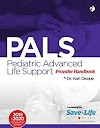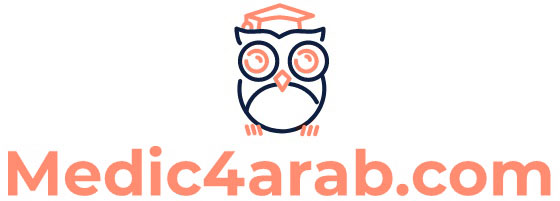- ✅ HOME
- 📚 Health Sciences
- _SEE ALSO
- __Internship الإمتياز
- __USMLE
- __تفريغات طبية Notes
- __Medical APPs
- __Videos
- __MP3
- __MRCOG
- __MRCS
- __PLAB
- __MRCP
- __كتب طبية معربة
- __AMC
- __أسئلة و اختبارات MCQ
- _MEDICINE
- __Anatomy
- __Physiology
- __Histology
- __Biochemistry
- __Pathology
- __Pharmacology
- __Microbiology
- __Bacteriology & Myco.
- __Virology
- __Parasitology
- __Immunology
- __Internal Medicine
- __Dermatology+Andr.
- __Psychiatry
- __Radiology
- __Surgery
- __ENT
- __Ophthalmology
- __Orthopedics
- __Pediatric
- __Gynecology & Obs.
- __Forensic
- __Toxicology
- __Community Medicine
- __specialities
- ___CVS Diseases
- ___Nephrology
- ___GIT Diseases
- ___Obstetrics And Gyne.
- ___General Surgery
- ___Neurosurgery
- ___Pediatric Surgery
- ___Plastic Surgery
- ___Cardiac Surgery
- ___Neonatology
- ___Family Medicine
- ___Community Medicine
- ___Anesthesia & ICU
- ___Dermatology Specialty
- ___Psychiatry Specialty
- ___Psychiatry
- ___Ophthalmology
- ___ENT & H&N Surgery
- ___Oral Maxillofacial S.
- ___Emergency Medicine
- ___Skeletal Imaging
- ___BREAST IMAGING
- ___Neuro-Radio imaging
- ___Orthopedics Specialty
- ___Urology Specialty
- ___Pathology Specialty
- _Dentistry
- __General Anatomy
- __Physiology
- __Histology
- __Biochemistry
- __Pathology
- __Microbiology
- __Bacteriology and Myco.
- __Virology
- __Parasitology
- __Immunology
- __Pharmacology
- __Oral Pathology
- __Oral Histology
- __Operative Dentistry
- __R. Prosthodontics
- __Biomaterials
- __General Medicine
- __General Surgery
- __Anesthesia
- __Oral Radiology
- __Oral Diagnosis -Planning
- __Endodontics
- __Fixed Prosthodontics
- __Periodontics
- __Pediatric dentistry
- __Orthodontics
- __Oral Surgery
- __Oral Medicine
- __Aesthetics
- _Pharmacy
- __Medicinal Plants
- __Organic Chemistry
- __Analytical Chemistry
- __Medical Terminology
- __Physical Pharmacy
- __Accounting and Pharmacy
- __Pharmacognosy
- __Anatomy
- __Physiology
- __Histology
- __Pathology
- __Psychology
- __Phytochemistry
- __Pharmacology
- __Microbiology
- __Bacteriology and Myco.
- __Virology
- __Parasitology
- __Immunology
- __Biochemistry
- __Hospital Pharmacy
- __Phytotherapy
- __Community Pharmacy
- __Clinical Chemistry
- __Pharm. Chemistry
- __Pharmacokinetics
- __Toxicology
- __First Aid
- __Industrial Pharmacy
- __Pharm. Microbiology
- __Clinical Pharmacy
- _Nursing
- __Medical Terminology
- __Microbiology
- __Bacteriology and Myco.
- __Virology
- __Parasitology
- __Immunology
- __Anatomy
- __Physiology
- __Biochemistry
- __Fundamentals-Nursing
- __Nutrition
- __Pathology
- __Med-Surgical Nursing
- __Psychology
- __Pharmacology
- __Psychiatric Nursing
- __Obs and Gyne Nursing
- __Nursing Management
- __Pediatric Nursing
- __Critical Care Nursing
- __Geriatric Nursing
- __Community Health Nursing
- __Nursing Informatics
- _Medical Laboratory
- __Medical Tech Skills
- __Instrumentation
- __Physiology
- __Biochemistry
- __Hematology
- __Immunology
- __Genetics- Molecular Bio.
- __Coagulation-Hemostasis
- __Diagnostic Microbiology
- __Blood Bank
- __Urinalysis and Body Fluids
- _Learning English
- 🔗 REPORT BROKEN LINK
- 🕬 Advertise with Us
Microbiology
Human Parasitology emphasizes a medical perspective while incorporating functional morphology, physiology, biochemistry, and immunology to enhance appreciation of the diverse implications of parasitism. Bridging the gap between classical clinical parasitology texts and traditional encyclopedic treatises, Human Parasitology appeals to students interested in the medical aspects of parasitology and those who require a solid foundation in the biology of parasites. This fourth edition has been fully revised to integrate the most recent molecular discoveries about mosquitoes, ticks and other arthropods as vectors, as well as the most effective therapeutic regimens.
New to this Edition:
• Features expanded coverage of the evolution of parasitism and an extensive update to immunology of parasite–host interactions
• Offers an enhanced art program featuring life-cycle illustrations and additional SEM and TEM micrographs
• New Host Immune Response section for each organism
Key Features
• Presents various parasites and examines how they interact with their hosts and respond to new treatments
• Easy to read with photographs, diagrams, and clinical case pictures throughout
Table of contents :
Dedication
Preface
Chapter 1. Symbiosis and Parasitism
Definitions
Ecological Aspects of Parasitism
Medical Implications
Evolution of Parasitism
Suggested Readings
Chapter 2. Parasite-Host Interactions
Effects of Parasites on Hosts
Biological Adaptations of Parasitism
Opportunistic Parasites
Selected Readings
Part I. The Protozoa
Chapter 3. General Characteristics of the Euprotista (Protozoa)
Locomotor Organelles Flagella
Other Organelles
Encystation
Reproduction
Selected Readings
Classification of the Protozoa
Chapter 4. Visceral Protozoa I: Rhizopods (Amoebae) and Ciliophorans
Amoebae
Pathogenic Free-Living Amoebae
Microsporidians
Ciliates
Selected Readings
Chapter 5. Visceral Protozoa II: Flagellates
Nontrichomonad Flagellates
The Genus Trichomonas and Related Forms
Selected Readings
Chapter 6. Blood and Tissue Protozoa I: Hemoflagellates
Morphologic Forms
Genus Trypanosoma
Selected Readings
Chapter 7. Blood and Tissue Protozoa II: Human Malaria
Plasmodium and Human Malaria
Selected Readings
Chapter 8. Blood and Tissue Protozoa III: Other Protists
Babesia
Toxoplasma gondii
Cryptosporidium parvum
Cyclospora cayentanensis
Isospora belli
Blastocystis hominis
Selected Readings
Part II. The Trematoda
Chapter 9. General Characteristics of the Trematoda
Structure of Adult
Generalized Life Cycle Patterns
Germ Cell Cycle
Physiology
Chemotherapy
Selected Readings
Classification of the Trematoda
Chapter 10. Visceral Flukes
Liver Flukes
Intestinal Flukes
Lung Flukes
Selected Readings
Chapter 11. Blood Flukes
Morphology
Variations
Symptomatology and Diagnosis
Chemotherapy
Host Immune Response
Other Schistosomes
Swimmer’s Itch
Selected Readings
Part III. The Cestoda
Chapter 12. General Characteristics of the Cestoda
Morphology
Life Cycle Patterns
Physiology
Chemotherapy
Host Immune Response
Selected Readings
Classification of the Cestoda
Chapter 13. Intestinal Tapeworms
Diphyllobothrium Latum
Taenia Solium
Taenia Saginata
Hymenolepis Nana
Hymenolepis Diminuta
Dipylidium Caninum
Selected Readings
Chapter 14. Extraintestinal Tapeworms
Human Sparganosis
Human Cysticercosis
Human Hydatidosis
Selected Readings
Part IV. The Nematoda
Chapter 15. General Characteristics of the Nematoda
Structure of the Adult
Selected Readings
Classification of the Nematoda
Chapter 16. Intestinal Nematodes
The Adenophorea
The Secernentea
Human Hookworm Disease
Selected Readings
Chapter 17. Blood and Tissue Nematodes
Life Cycle
Periodicity
Filarial Worms
The Guinea Worm
Selected Readings
Part V. Arthropoda
Chapter 18. Arthropods as Vectors
Significance of Arthropods as Vectors
General Structural Features
The Dipterans
Other Insects
The Acarines
Selected Readings
Classification of the Arthropoda
Glossary
Appendix A. Drugs for Parasitic Infections: Partial List of Generic and Brand Names
Appendix B. Current Chemotherapeutic Regimens
Appendix C. Adverse Effects of Antiparasitic Drugs
You may like these posts
Search This Site
Visitors Counter
TRENDING

BLS: Qquestion and Answer by (NHCPS)
BLS: Qquestion and Answer by (NHCPS) True or False: The jaw-thrust…

ACLS: Qquestion and Answer by (NHCPS)
ACLS: Qquestion and Answer by (NHCPS) True or False: Synchroni…

جميع كتب التشريح - أناتومي للدكتور سامح دوس (المرجع الذي ينصح به أغلب طلاب الطب) Anatomy books by dr. Sameh doss
جميع كتب التشريح - أناتومي للدكتور سامح دوس ِAnatomy books by…

لطلاب الطب البشري : أفضل مرجع تذاكر منه لكل مادة (تجربتي الشخصية)
لطلاب الطب البشري : أفضل مرجع تذاكر منه كل مادة (تجربتي الشخصي…

جميع كتب د. محمد المطري في الجراحة + جراحة عملي Surgery books by dr. mohamed al matary
جميع كتب د. محمد المطري في الجراحة للتحميل Surgery books by dr…

Internal Medicine Books, Dr. Ahmed Mowafy (2020-2021)
Internal Medicine Books, Dr. Ahmed Mowafy (2020-2021) كتب الباطنة لـ د/…

Internal medicine Books Dr. Mahmoud Allam (2021)
Internal medicine Books Dr. Mahmoud Allam (2021) كل كتب الباطنة لـ د / …

كورس الأشعة Radiology للدكتور محمود محفوظ (فيديو) + تفربغات
كورس الأشعة Radiology للدكتور محمود محفوظ (فيديو) + تفربغات X…

كل ما تريد معرفته عن اختبار ال OET و كيف تستعد له
السلام عليكم بوست طويل مهم للدكاترة اللي ما زالت في بداية طريق ا…

PALS: Qquestion and Answer by (NHCPS)
PALS: Qquestion and Answer by (NHCPS) True or False: Shock may o…

جميع كتب د. محمد المطري في الجراحة + جراحة عملي Surgery books by dr. mohamed al matary
جميع كتب د. محمد المطري في الجراحة للتحميل Surgery books by dr…

تحميل فيديوهات و ملفات Download Boards & Beyond الخاصة بالاستعداد ل USMLE Step 1
Download FREE Videos & PDFs of Board and Beyond USMLE STEP 1 …

BLS: Qquestion and Answer by (NHCPS)
BLS: Qquestion and Answer by (NHCPS) True or False: The jaw-thrust…

جميع كتب التشريح - أناتومي للدكتور سامح دوس (المرجع الذي ينصح به أغلب طلاب الطب) Anatomy books by dr. Sameh doss
جميع كتب التشريح - أناتومي للدكتور سامح دوس ِAnatomy books by…

ACLS: Qquestion and Answer by (NHCPS)
ACLS: Qquestion and Answer by (NHCPS) True or False: Synchroni…

لطلاب الطب البشري : أفضل مرجع تذاكر منه لكل مادة (تجربتي الشخصية)
لطلاب الطب البشري : أفضل مرجع تذاكر منه كل مادة (تجربتي الشخصي…

كتب و تفريغات و مراجعات الباطنة للدكتور محمد الشافعي
كتب و تفريغات و مراجعات الباطنة للدكتور محمد الشافعي Internal …

Internal Medicine Books, Dr. Ahmed Mowafy (2020-2021)
Internal Medicine Books, Dr. Ahmed Mowafy (2020-2021) كتب الباطنة لـ د/…

كل ما تريد معرفته عن اختبار ال OET و كيف تستعد له
السلام عليكم بوست طويل مهم للدكاترة اللي ما زالت في بداية طريق ا…

Internal medicine Books Dr. Mahmoud Allam (2021)
Internal medicine Books Dr. Mahmoud Allam (2021) كل كتب الباطنة لـ د / …
✅ WE HAVE A TOTAL OF:
Books & Articles.
FOLLOW US
☕ Support Our Work
BTC: 16HDZmgAwtoHcL8huAmZaWJQ2UD9MWGk7o
USDT (TRC20): TYJurLBhjtwGLXQps5ftDxdU925vyR7wHC
اللَّهُمَّ صَلِّ وَسَلِّمْ وَبَارِكْ عَلَى سَيِّدِنَا مُحَمَّدٍ
Created By SoraTemplates | Distributed By Blogger Templates


